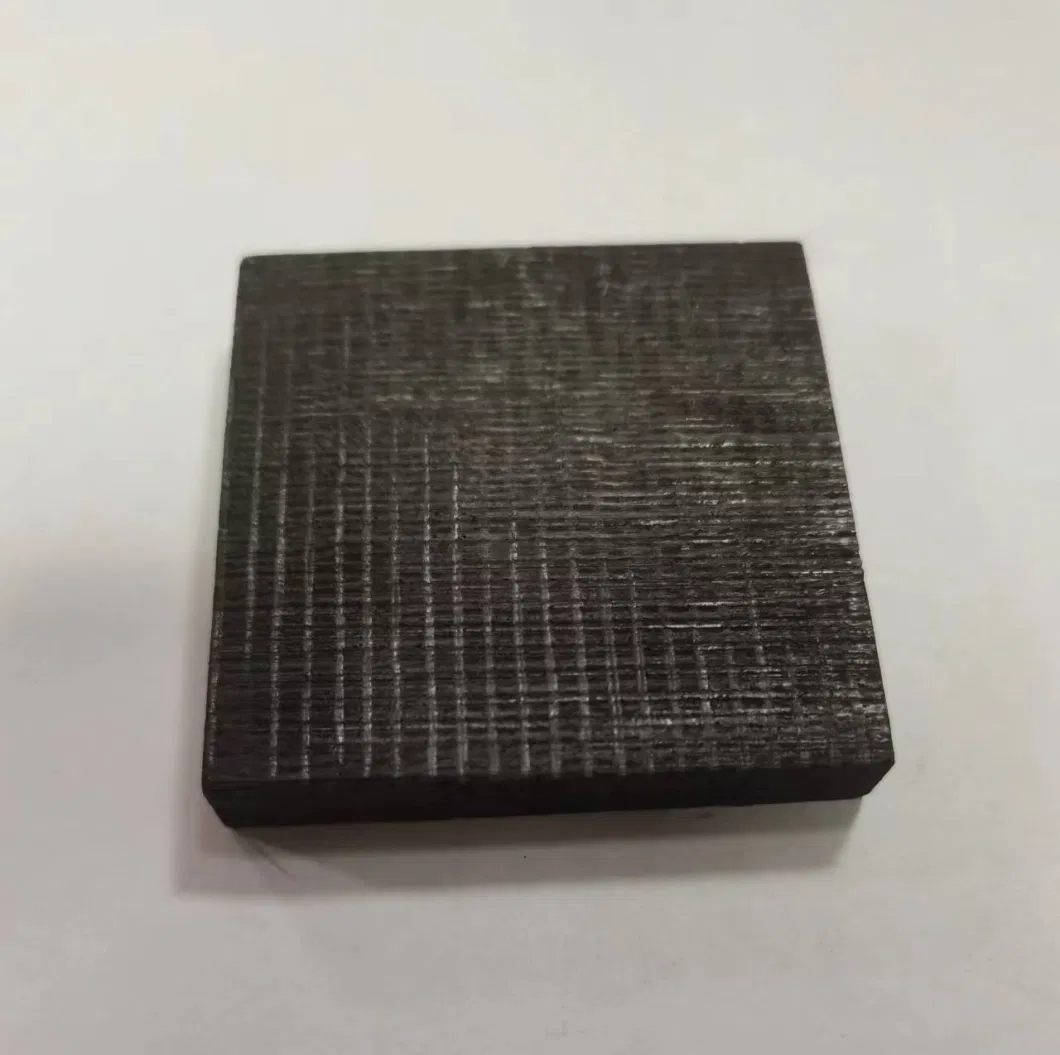Basic Info.
Processing Temperature
2000 Centidegree
Weight
Light
Density
Low
Strength
High
Transport Package
Cartons and Plywood Boxes
Specification
customized
Origin
China
Production Capacity
5000PCS/Month
Product Description
Carbon-carbon composite material is generally divided into woven products and laminates. Laminates are further divided into long fibers and short fibers.
Carbon carbon composite material has so many different names. Different people use different names when refer to the same product, while its same kind of material.
CFC (Carbon Fiber Composite) is also referred to as Carbon-Carbon Composite, CFC, or Carbon Reinforced Matrix Composite. All of these aliases refer to this product.

Carbon-carbon composite features:
(1) Physical properties: After high temperature treatment, the carbon composite has higher carbon content, >99%, the density is low, the mechanical properties are good. Due to good characteristic of high melting point of carbon, high temperature resistance, corrosion resistance and thermal shock performance, the carbon composite is resistant to acid, alkali and salt.
(2) High mechanical strength: the strength is 5 times that of steel at high temperature.
(3) High temperature resistance: excellent mechanical and electrical properties can still be maintained at temperatures above 2000ºC.
(4) Low thermal expansion coefficient.
(5) Low heat capacity.
Special Properties of carbon carbon composite: High Acid-resisting and alkali-resisting properties; Low density compared to metals; High temperature, cold-resistant, tensile strength is 7-9times than Steel; very good thermal shock resistance…
Originally developed for use in the aerospace sector, CFC has become an extremely cost-effective solution for furnace fixture applications. The unique attributes of CFC offer advantages compared to metal and graphite fixtures. The material can be provided in a wide variety of sizes and geometric shapes.

Our main CFC products: multi-Ply sheets, threaded rods, fasteners, bolts and nuts, Plates.
Applications:
Aerospace
Heating treatment and furnace fixtures
Windmill blades
Brake linings, automotive, and tolling
Technical Specifications:
Carbon carbon composite material has so many different names. Different people use different names when refer to the same product, while its same kind of material.
CFC (Carbon Fiber Composite) is also referred to as Carbon-Carbon Composite, CFC, or Carbon Reinforced Matrix Composite. All of these aliases refer to this product.

Carbon-carbon composite features:
(1) Physical properties: After high temperature treatment, the carbon composite has higher carbon content, >99%, the density is low, the mechanical properties are good. Due to good characteristic of high melting point of carbon, high temperature resistance, corrosion resistance and thermal shock performance, the carbon composite is resistant to acid, alkali and salt.
(2) High mechanical strength: the strength is 5 times that of steel at high temperature.
(3) High temperature resistance: excellent mechanical and electrical properties can still be maintained at temperatures above 2000ºC.
(4) Low thermal expansion coefficient.
(5) Low heat capacity.
Special Properties of carbon carbon composite: High Acid-resisting and alkali-resisting properties; Low density compared to metals; High temperature, cold-resistant, tensile strength is 7-9times than Steel; very good thermal shock resistance…
Originally developed for use in the aerospace sector, CFC has become an extremely cost-effective solution for furnace fixture applications. The unique attributes of CFC offer advantages compared to metal and graphite fixtures. The material can be provided in a wide variety of sizes and geometric shapes.

Our main CFC products: multi-Ply sheets, threaded rods, fasteners, bolts and nuts, Plates.
Applications:
Aerospace
Heating treatment and furnace fixtures
Windmill blades
Brake linings, automotive, and tolling
Technical Specifications:
| Material | CFC laminates |
| Grade | FTCY-CFC |
| Bulk Density(g/cm3) | 1.4~1.5 |
| Carbon Content(%) | ≥98.5-99.9 |
| Bending Strength(MPa) | 100~150 |
| Tensile Strength(MPa) | 90~130 |
| Flexural Strenth(MPa) | 100-200 |
| Interlaminar Shear Strength(MPa) | ≥13 |
| Compressive Strength(MPa) | 130~170 |
| Tensile modulus(GPa) | 25~35 |
| Coefficient of Linear Expansion(10-6/K) | 0.3~1.2 |
| Resistivity(μΩ·k) | 30~43 |
| Thermal Conductivity(W/m·k) | 10-30 |
| Ash(PPM) | ≤65 |
| Processing Temperature(ºC) | 2400 |
| Material | CFC woven |
| Grade | FTZC-C/C |
| Bulk Density(g/cm3) | 1.5~1.8 |
| Bending Strength(MPa) | 120~180 |
| Tensile Strength(MPa) | 100~140 |
| Interlaminar Shear Strength(MPa) | 10~15 |
| Z-direction Compressive Strength(MPa) | 120~150 |
| XY -direction Compressive Strength(MPa) | 180~250 |
| Tensile Modulus(GPa) | 25~35 |
| Coefficient of Linear Expansion(10-6/K) | 0.5~1.3 |
| Resistivity(μΩ·k) | 15~40 |
| Thermal Conductivity(W/m·k) | 30-50 |
| Ash(PPM) | ≤100 |





